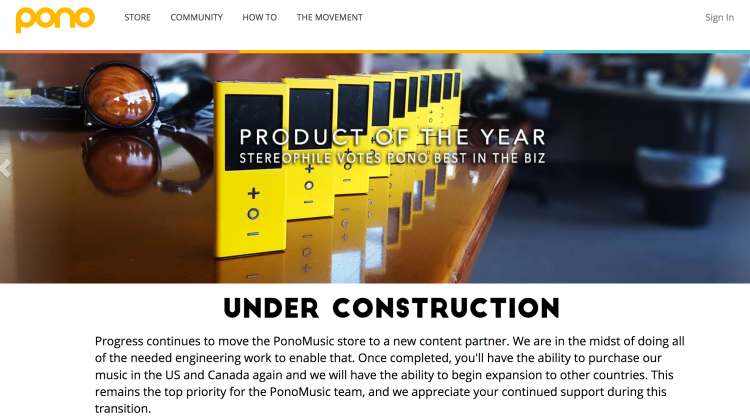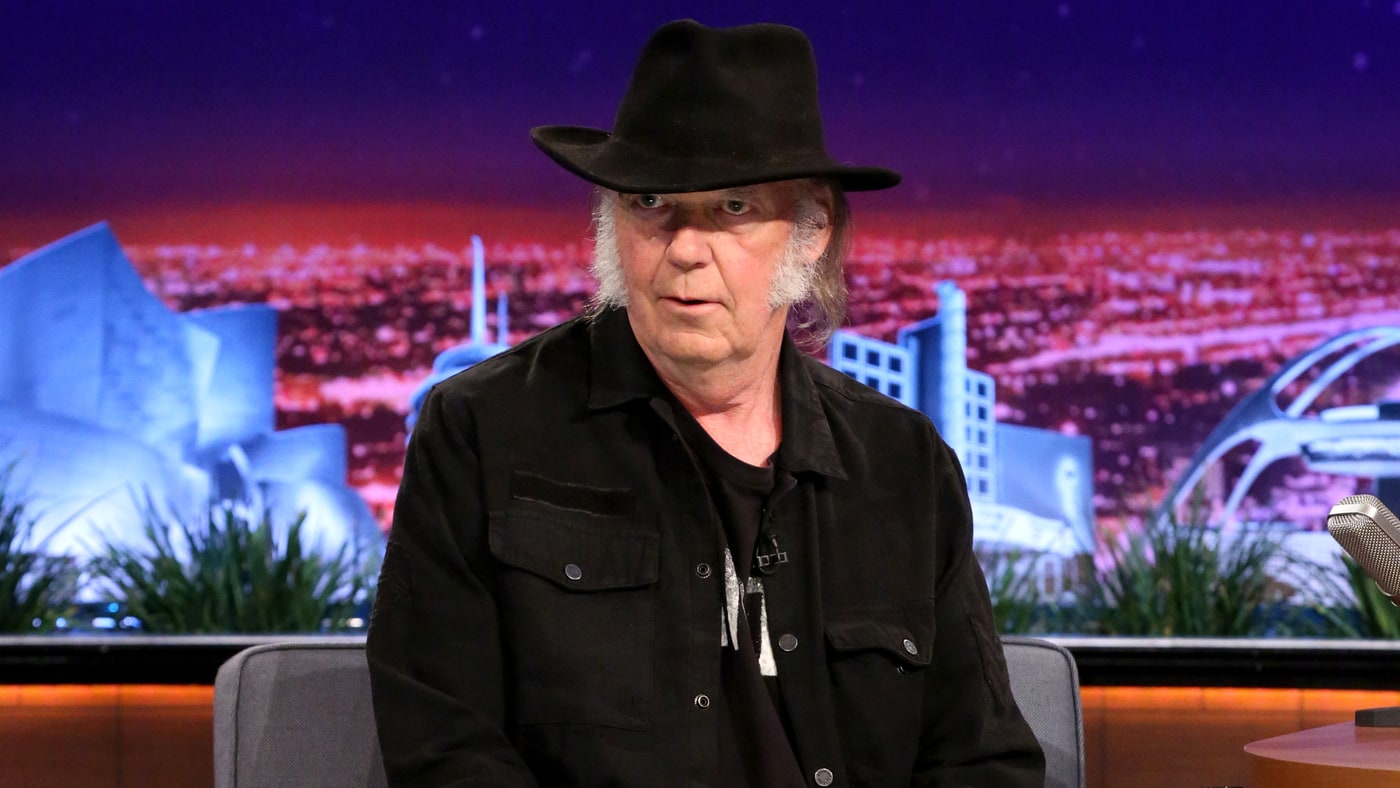Publié le 8 novembre 2016
J’apprends aujourd’hui que Neil Young est de retour sur les plateformes de streaming. Ah bon ? Pourtant, en juillet 2015, il annonçait faire un trait sur celles-ci. « Ce n’est pas une question d’argent, c’est un problème de qualité. » disait-il.
Neil Young Pulling Catalog From Streaming Services
Rocker says he’s ditching services over sound quality: « Streaming is the worst audio in history »
« It’s not because of the money, although my share (like all the other artists) was dramatically reduced by bad deals made without my consent. It’s about sound quality. I don’t need my music to be devalued by the worst quality in the history of broadcasting or any other form of distribution. I don’t feel right allowing this to be sold to my fans. It’s bad for my music. »
Comment un artiste peut-il décider de retirer son catalogue des plateformes et être victime de deals faits sans son consentement ?
Neil Young est un artiste historiquement « labelisé » Warner. En 2012 il lance PONO avec le « consentement » de sa maison de disques… Celle-là même qui brade son catalogue sans son autorisation…
Pono (digital music service)
Extrait Wikipedia
Young is the Founder of Pono Music. In September 2012, Young appeared on the Late Show with David Letterman with a prototype of the player, and reported backing from major record labels Warner, Sony, and Universal, with a full agreement with Warner.
Neil Young lance Pono donc, avec consentement et back-up financier de Warner et Universal.
$6.2M of funding for the project was raised via preorders for the player using the crowdfunding platform Kickstarter. In June 2014, Young assumed the title of CEO of Pono Music. The Pono player and music store was officially launched in January 2015.
Sa campagne Kikstarter rapporte plus de 6 millions de dollars. Le service PONO est officiellement lancé en janvier 2015, il quitte les plateformes classiques quelques mois plus tard…
Ecosystem
The Pono « ecosystem » will reportedly comprise the following components:
- A portable music player, « PonoPlayer », costing $399 with 64 GB of internal storage. The player also supports removable MicroSD cards up to 128GB.
- The PonoMusic online music store, which will also sell earbud and headphone products suitable for use with the PonoPlayer device.
- « PonoMusic App », accompanying desktop-based « media-management » software, which will allow customers to download and sync music to the player.
Le lecteur et le service en ligne fonctionnent en « autarcie ».
Reception
A 2012 Rolling Stone report on Pono relayed generally positive anticipation, but quoted musician Jim James as asking, « I’ve already bought Aretha Franklin’s ‘Respect’ a lot of times. Do I have to buy it again ?.
Press reaction to Pono announcements in March 2014, was generally skeptical: approving of the idea of good sound, but questioning the viability of a standalone player in a market that had moved largely to smartphones and that was moving increasingly towards music streaming. Several commentators suggested that the key to improved sound lay largely in music engineering and mastering practices, rather than in file formats and players.
In the wake of its launch at the Consumer Electronics Show in January 2015, Pono received mixed reviews. Yahoo Tech’s David Pogue conducted a blind test with 15 volunteers aged 17 through 55 comparing Pono Music downloads (FLAC format) played on a Pono Player with iTunes downloads (AAC format) played on an iPhone; he found that the participants did not prefer Pono. A subsequent (subjective, non-ABX) review in the Stereophile magazine, deemed the Pono Player’s performance superior to more expensive components and players with the reviewer saying « I am pleased to report that CD rips sounded excellent through the player ».
Fermeture
On July 17, 2016, Pono Music announced that their online music store would be temporarily shut down due to the acquisition of their content partner, Omnifone, by « a large company ». During this shutdown period, Pono Music will be transitioning to a new platform provided by 7digital.
Fin des opérations en juillet 2016…
Actuellement
PONO affiche sur sa page d’accueil un service en construction… gageons que les rénos vont durer longtemps…

Apple Music, Neil Young, and Taylor Swift will drive honest people to piracy
Selon certains : « si un album n’est pas disponible sur la plateforme à laquelle je suis abonné, je vis sans ou… je pirate. »
If every streaming service has its own exclusives, the customer experience at all of them suffers. It is silly to expect consumers to subscribe to multiple services, but that is exactly what Apple’s antics will lead to. Sure, Apple’s goal is to force most users to its service exclusively, but that will not happen. Instead, the fragmentation could be the demise of the Music Industry’s best chance at staying financially viable.
Taylor Swift famously pulled her music from Spotify. She then fought Apple Music over royalty payments — or a lack thereof — during the initial 3 month free trial. Her public stance was successful, getting Apple to reverse course. Now, her wildly popular album « 1989 » is an Apple Music streaming exclusive. What are Spotify and Groove Music users to do? Pirate?
One of my favorite musicians, Neil Young, has decided to pull his music from all streaming services. Coincidentally — or not — Mr. Young has a financial interest in competing music service Pono. While not a streaming service, Pono aims to sell music downloads with the angle that the sound quality is better.
Mr. Young is totally within his rights to pull his music from streaming services — it is his art, after all. Still, for many fans, myself included, the Spotify quality is more than fine. I’ve never been listening to « The Needle and the Damage Done » in my backyard on Spotify and thought anything was lacking. It was just as beautiful as always. He is crazy to think that I will subscribe to a music service, but then spend more to buy his albums — I want it all in one place at one price.
So here is my plan. I am going to stick with Spotify. If something I want to hear is an Apple Music exclusive, or not available on streaming, I just won’t listen to it. With that said, I am sure many other people will choose to download it illegally from The Pirate Bay or an FTP site. While I do not condone it, I understand it.
Finallement
Neil Young returns to Apple Music and Spotify
As far as I know, streaming music quality has not dramatically improved since Young pulled his classic tunes. So what changed? His competing music service, Pono, has since closed. The website says « Under Construction » at the moment, implying it is temporary, but I’d be surprised to see it ever come back. It seems Young may have decided that money was more important than sound quality after all.
Le journaliste me l’enlève de la bouche, l’agent compte plus que la qualité du son… finalement.
Une pensée pour tout ceux qui ont acheté le lecteur PONO 400 piasses, en plus des fichiers FLAC sur le site, les cartes mémoire, le casque etc…
Une chose est certaine, beaucoup de millions sont passés sous les ponts et entre les mains pures et innocentes du grand Neil au coeur d’or depuis le début de toute cette histoire ponographique !
Le cas Neil Young ressemble à bien d’autres cas d’artistes qui s’expriment « haut et fort » pour défendre la qualité, la diversité, la relève, les fans, l’honneur de la profession, l’art pour l’art, l’étique et touti quanti alors que l’argent siège au coeur de leur démarche équitable…
